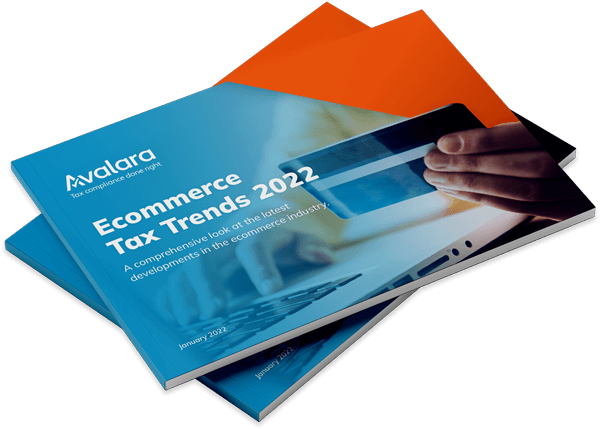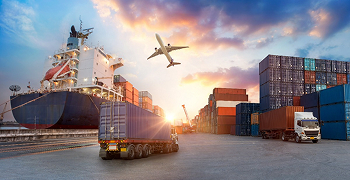
DeliveryX: Warehousing in 2023
The retail research experts RetailX recently released the 2023 DeliveryX Warehousing Report, which will look at the future of ecommerce warehouses. Avalara is proud to sponsor the DeliveryX Warehousing Report, which will feature our own partner perspective from John Chiswell, Cross Border Solutions Manager, and Lyndsey Robinson, EMEA Customs Manager.
Using their insights, we’ve also put together this blog, which will examine the important developments our experts have identified within the warehousing industry, as well as retail trends. We’ll also be including vital statistics to help you understand the state of warehousing in 2023. Read on to discover more.
Stay aware of taxation and location
Warehousing is a key aspect of cross-border trade, but there are some considerations that retail businesses need to be aware of before they can begin selling their goods across borders. Specifically, understanding how location affects your taxes is important, as storing your goods in a warehouse abroad may create new tax liabilities for your business.
Similarly, checking the customs duty rates for the products you sell and the country you’re selling to is also a wise choice. The national duty rate may be the deciding factor between warehousing your goods abroad or domestically. For example, countries in South America (such as Argentina and Brazil) have very high average tariff rates. Frequently shipping goods there would mean having to pay those high customs tariffs every time you imported a product into the country. A most cost effective system would be to warehouse your goods within the country you’re selling to, saving you from paying the tariff every time an order is placed.
Both tax and customs duty will have an impact on your efforts to stay competitive in overseas markets. Additionally, if you sell to multiple countries, it’s essential you have some kind of automation or software that can calculate the relevant import tax and duty rates to help drive your decision-making.
Why automation is the perfect HS Code partner
A key piece of information you should have when calculating customs duty rates is the HS codes for your goods. Harmonised System (HS) codes are 6 to 12 digit numbers that indicate what a product is, and are used by national customs authorities to calculate duty rates for products being imported into their country.
The codes relate to different chapters and headings within the Harmonised System Nomenclature, and the different chapters list various product types and categories. There are literally thousands of different chapters, headings and subheadings in the Harmonised System, so there’s a considerable chance to make errors.
The consequences of using incorrect HS codes are significant, so you may want to look into digital solutions that help you apply the correct HS codes. By automating your HS code application, you can eliminate the risk of human error and massively boost efficiency.
The growing importance of Bonded Warehousing
Goods moving between the EU and the UK receive preferential tariffs due to the rules of origin, which are part of the EU/UK Trade and Cooperation Agreement. However, any goods that clear UK or EU customs and are sent back to their country of origin (or exported to a third country) are not classified as preferential trade.
So if you manufacture your goods in the EU, bring them to the UK for warehousing or packaging, but then sell them to a customer in the EU, they’ll have more expensive trade tariffs applied to that final journey.
However, bonded warehouses can help facilitate preferential trade, as goods sent to these locations don’t have to go through customs. So anything transported to a bonded warehouse is still included as preferential trade, even if it’s sent back to the country of origin or exported. In this way, bonded warehouses can be a huge asset to international retail businesses.
Online sales fuel warehouse expansion
The warehousing industry has experienced exceptional growth in the last two years:
- US warehouse market revenue was $50.5 billion in 2021, compared to $42.2 billion in 2020, the largest increase in more than a decade.
- In 2021, the number of UK business premises classified as transport and storage (including warehousing and logistics groups) was 88% higher than in 2011 and 21% higher than in 2019.
- Third-party warehousing (3PL) is predicted to expand at over 5% CAGR over the next decade, and is currently worth USD $1 trillion globally.
The growth is likely linked to the online shopping boom caused by the COVID-19 pandemic, but has continued into 2023. For 3PL, its popularity may be due to how simple it makes expansion, allowing smaller retailers to scale up their business without worrying about underdeveloped dispatch and distribution slowing them down.
Alleviating supply chain issues in 2023
Despite the growth in the logistics industry, there are still frequent disruptions to most retailers’ supply chains. The root cause of these disruptions varies from economic conditions to the price of energy, as well as the ongoing war in Ukraine — all three of which are external problems that businesses can do little to solve.
As a result, for many businesses, the best way to alleviate disruptions is simply to manage expectations better between your company, your customers, and your suppliers. While this won’t reduce lead times when shipping items to customers (or to your own warehouses), it will make it clearer to the end recipient that delivery will take time. Promising super-fast delivery and sending your goods late is worse than highlighting longer delivery times from the start.
However, advertising long delivery times can scare away new customers, or harm the loyalty of existing ones. If there’s no way of solving your supply chain disruption (e.g. changing suppliers or altering the makeup of your product line) then you need to perform a closer review of the lead times you’ll need to work with.
By properly auditing how long it will take to deliver goods and receive stock, businesses can sufficiently plan ahead and stay ahead of most of the uncertainty that is currently surrounding the supply chain. Although this won’t stop disruptions from occurring, it will shield your business from their effects.
How Avalara can support your future success
Are you looking to accelerate your cross-border growth, but keep running into delays or unexpectedly high customs charges? The problem might lie with your HS codes.
Avalara offers an AI-based item classification tool that can help you overcome customs challenges and support your business as it scales. Our solution is essential for ensuring HS compliance and alleviating supply chain disruptions.
If you want to make your international expansion easier, you can learn more about our HS code solution here. We can even provide an item classification audit for wherever you sell to, giving you a better idea of where your business will stand in that market.
If you’re facing any other tax challenges, don’t hesitate to contact our team of experts — click here to get in touch. If you’d like to learn more about the DeliveryX Warehousing Report, you can read the report here.
Ecommerce Tax Trends Report 2022
Get a comprehensive look at the latest developments in the ecommerce industry.

Stay up to date
Sign up today for our free newsletter and receive the latest indirect tax updates impacting businesses selling internationally straight to your inbox.



